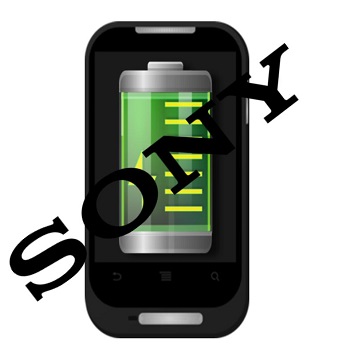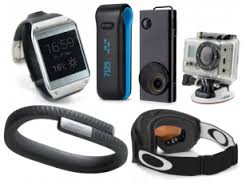The company is hoping to help to overcome a battery life struggle that is holding back the mobile industry.
As smartphone manufacturers increasingly show that they are unwilling to produce thicker devices in order to accommodate longer lasting smartphone batteries, Sony has taken on the task of developing a power source that will last about forty percent longer than the current average without requiring more space.
The majority of consumers are required to charge their smartphones every night to accommodate the next day’s use.
A new announcement has showed that Sony is coming up with considerably more energy efficient types of smartphone batteries using technology that should become available in the consumer market by 2020. This new tech uses magnesium and sulfur based electrodes in order to form a power source that will hold about 40 percent more power than Li-ion battery cells of the same physical size.
Researchers have been looking into smartphone batteries based on lithium-sulfur for some time now.
 However, the problem that has been faced is in making a stable environment in which to contain the sulfur. Without accomplishing that goal, the sulfur breaks down very quickly and once it has degraded it will not perform as a component of the mobile device battery. That said, based on the latest reports from Sony, it looks as though that company may have been able to come up with a new way to maintain the stability of the sulfur and, therefore, make it usable in a practical way as a part of a more powerful battery.
However, the problem that has been faced is in making a stable environment in which to contain the sulfur. Without accomplishing that goal, the sulfur breaks down very quickly and once it has degraded it will not perform as a component of the mobile device battery. That said, based on the latest reports from Sony, it looks as though that company may have been able to come up with a new way to maintain the stability of the sulfur and, therefore, make it usable in a practical way as a part of a more powerful battery.
That said, Sony has also reported that it is testing out a battery that combines sulphur and magnesium. It is believed that they are doing this because they want to overcome one of the struggles that are presented by using lithium, which is its own degradation over time, eventually turning the substance into a fire hazard. By using a rechargeable power source that does not contain lithium, it’s possible to boost the safety to consumers.
That said, after all the research Sony is doing into smartphone batteries with better performance, it could possibly be that nothing will result. However, when taking into consideration that it was Sony that came up with the Li-ion commercially viable battery in the first place, the company has shown that it knows what it is doing in that area.
A new forecast from IDC has predicted that smartwatches, fitness trackers and other wearables are rising fast.
This year, the International Data Corporation (IDC) reported a massive surge in the wearable technology market, which it said saw growth of 300 percent due to the sale of products such as the Fitbit Surge, Apple Watch and Pebble Time.
The IDC has released a report saying that by the end of 2016, worldwide shipments will hit 111.1 million.
That will mean that wearable technology will have seen an increase of 44 percent over the figure from 2015. That said, by the year 2019, shipments of wearables will have broken through the 214.6 million mark. According to the wearables team research manager at IDC, Ramon Llamas, “In a short amount of time, smartwatches have evolved from being extensions of the smartphone to wearable computers capable of communications, notifications, applications, and numerous other functionalities.”
It was also pointed out that wearable technology devices are experiencing a rapid evolution.
 Llamas went on to point out that just because they’re starting to sell and they will be seeing rapid growth over coming years, it doesn’t mean that the smartwatches we currently know will be the ones that actually take off over the next few years. He explained that “The smartwatch we have today will look nothing like the smartwatch we will see in the future.”
Llamas went on to point out that just because they’re starting to sell and they will be seeing rapid growth over coming years, it doesn’t mean that the smartwatches we currently know will be the ones that actually take off over the next few years. He explained that “The smartwatch we have today will look nothing like the smartwatch we will see in the future.”
He also underscored the forecast that the details of these devices will be quite different from what we currently see. The health sensors, cellular connectivity and even the wearables app market – which is already rapidly on the grow – will be ready to provide serious game changing evolutions in this market. Llamas feels that it will be in those areas that the gadgets will start to define themselves as having value and will become appealing to consumers.
While many of its predictions aligned well with other reports that have been issued by various prediction firms, the IDC report was somewhat different in that it has said that watchOS and Android Wear will be grabbing the top two spots (respectively). That said, it also stated that Tizen from Samsung will carve out an important segment of the market over the next four years, as well, to the point that it might swipe away some of the share that would otherwise have belonged to Android Wear.
 However, the problem that has been faced is in making a stable environment in which to contain the sulfur. Without accomplishing that goal, the sulfur breaks down very quickly and once it has degraded it will not perform as a component of the mobile device battery. That said, based on the latest reports from Sony, it looks as though that company may have been able to come up with a new way to maintain the stability of the sulfur and, therefore, make it usable in a practical way as a part of a more powerful battery.
However, the problem that has been faced is in making a stable environment in which to contain the sulfur. Without accomplishing that goal, the sulfur breaks down very quickly and once it has degraded it will not perform as a component of the mobile device battery. That said, based on the latest reports from Sony, it looks as though that company may have been able to come up with a new way to maintain the stability of the sulfur and, therefore, make it usable in a practical way as a part of a more powerful battery.
 Llamas went on to point out that just because they’re starting to sell and they will be seeing rapid growth over coming years, it doesn’t mean that the smartwatches we currently know will be the ones that actually take off over the next few years. He explained that “The smartwatch we have today will look nothing like the smartwatch we will see in the future.”
Llamas went on to point out that just because they’re starting to sell and they will be seeing rapid growth over coming years, it doesn’t mean that the smartwatches we currently know will be the ones that actually take off over the next few years. He explained that “The smartwatch we have today will look nothing like the smartwatch we will see in the future.”